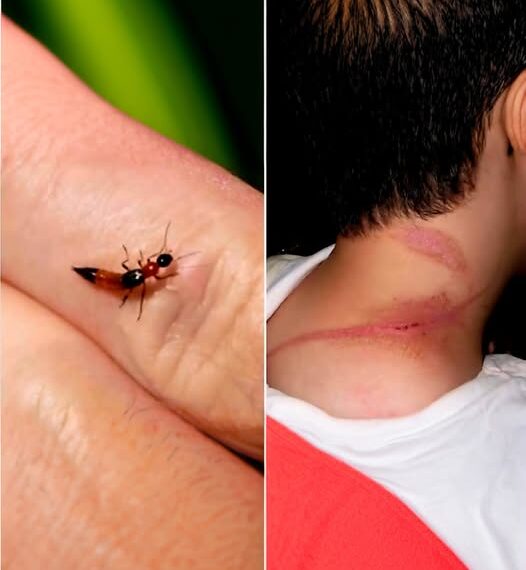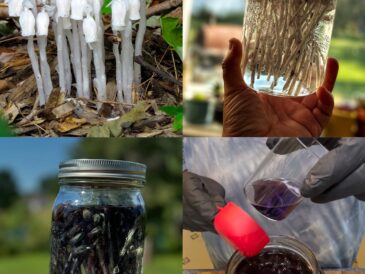The Paederus beetle is an unusual insect with a dangerous secret. It doesn’t bite, sting, or actively attack humans. However, if you accidentally crush this tiny bug against your skin, it can cause severe chemical burns and painful dermatitis. This toxin-induced skin injury can leave red blisters, intense burning, and scarring.
Many people are unaware of the risks posed by Paederus beetles, and awareness is crucial for prevention. This comprehensive guide will help you understand what the Paederus beetle is, how it affects skin, what symptoms to look out for, and how to protect yourself and your loved ones.
What Is the Paederus Beetle?
The Paederus beetle belongs to the Staphylinidae family, commonly known as rove beetles. There are over 600 species worldwide, but only some produce the toxin called paederin, which causes the skin irritation known as Paederus dermatitis.
Physical Description:
- Size: About 7–10 mm long (roughly the size of a grain of rice)
- Color: Typically bright orange or red and black, often with a striking striped pattern
- Shape: Slender, elongated body with short wing covers that expose part of the abdomen
Because of their bright colors, they are sometimes mistaken for harmless or even beneficial insects. However, their toxin makes contact dangerous.
Behavior:
- They are attracted to light, especially artificial lighting at night.
- Active mostly during warm, humid months.
- Found near water bodies, marshes, rice paddies, and agricultural fields.
- Not aggressive and do not bite or sting, but will release toxin if crushed.
Why Does the Paederus Beetle Cause Skin Burns?
The danger lies in a potent toxin called paederin, which is released from the beetle’s body when it is crushed or squashed on the skin. Paederin is one of the most powerful natural toxins known in insects. It’s a chemical irritant that causes severe inflammation and blistering of the skin.
Unlike a bee sting or mosquito bite, which involves venom injection, the Paederus toxin works by direct chemical irritation and damage to skin cells. This reaction is called chemical dermatitis or Paederus dermatitis.
Symptoms of Paederus Dermatitis
If you accidentally squash a Paederus beetle on your skin, you may develop symptoms within 24 hours. The severity depends on how much toxin contacts your skin and how long it remains.
Common Symptoms Include:
- Redness and intense inflammation at the site of contact
- Burning or stinging sensation
- Blisters or vesicles that can break open and crust over
- Linear or streaky rash, sometimes called “whiplash dermatitis” because it can appear as streaks if toxin is spread by rubbing or wiping
- Painful sores or ulcers in severe cases
- Swelling around the affected area
- Itching may or may not be present
Possible Complications:
- Secondary bacterial infection from scratching or open sores
- Pigment changes (hyperpigmentation or hypopigmentation) after healing
- Scarring if lesions are deep or infected
- Eye involvement (conjunctivitis or keratoconjunctivitis) if toxin contacts eyes
Geographic Distribution: Where Is Paederus Found?
Paederus beetles are found globally, except in cold, polar, or high-altitude regions. They thrive in warm, tropical, and subtropical climates. The beetle prefers humid, moist environments such as:
- Riverbanks
- Swamps and marshes
- Rice fields and paddy farms
- Coastal areas and wetlands
- Agricultural land with irrigation
In Europe and France:
While more common in tropical areas, some species such as Paederus riparius and Paederus littoralis are active in parts of France and southern Europe during warmer months. Cases of Paederus dermatitis have been reported, especially in humid regions.
How to Prevent Paederus Dermatitis
Prevention is the best approach since treatment is focused on managing symptoms rather than a quick cure.
Key Prevention Tips:
- Avoid Crushing the Beetle:
If you spot a Paederus on your skin or nearby, don’t squash it. Instead, gently blow it away or brush it off using a soft object. - Protective Clothing:
When in high-risk areas (fields, near water), wear long sleeves, pants, and gloves to minimize skin exposure. - Limit Light Attraction:
Since the beetle is drawn to lights at night, reduce outdoor lighting or use yellow “bug” lights that attract fewer insects. - Keep Windows and Doors Closed:
Use screens to prevent beetles from entering homes at night. - Educate At-Risk Communities:
Inform people living in or visiting endemic areas about the risks and symptoms.
What To Do If You’ve Been Exposed
If you accidentally crush a Paederus beetle on your skin or notice a burning sensation after contact, follow these steps:
Immediate First Aid:
- Do not rub or scratch the area.
- Wash the affected skin thoroughly with soap and plenty of water as soon as possible to remove residual toxin.
- Avoid touching your face or eyes to prevent spreading the toxin.
- Apply a cold compress to reduce inflammation.
Medical Treatment:
- Over-the-counter topical corticosteroids may reduce inflammation.
- Use antihistamines if itching occurs.
- For severe lesions, a healthcare provider might prescribe antibiotics if secondary infection occurs.
- Seek prompt medical attention if:
- The rash worsens or spreads
- Blisters are large, painful, or infected
- Eye irritation or vision problems develop after exposure
Public Health Implications
Paederus dermatitis outbreaks can affect agricultural workers, campers, and residents of endemic regions. These outbreaks may lead to discomfort, missed work, and medical costs. Public health campaigns focusing on education and environmental control are important in preventing outbreaks.
Myths and Facts About Paederus Beetles
Myth: The beetle bites or stings.
Fact: It neither bites nor stings. The toxin only causes injury if the insect is crushed.
Myth: The rash is contagious.
Fact: The rash cannot be passed from person to person. It’s caused by direct contact with the beetle’s toxin.
Myth: All beetles are harmful.
Fact: Most beetles are harmless or beneficial. Only some species of Paederus carry paederin toxin.
Summary: Key Points to Remember
| Aspect | What You Need to Know |
|---|---|
| Insect | Paederus beetle, rove beetle family |
| Toxin | Paederin – causes chemical burns |
| Skin Reaction | Severe dermatitis with blisters and redness |
| Main Risk Behavior | Crushing the insect on skin |
| Prevention | Do not crush, gently remove, wash skin immediately |
| Geographic Range | Tropical, subtropical, humid areas worldwide |
| Treatment | Wash area, topical steroids, medical care if needed |
Conclusion: Awareness Saves Skin
The Paederus beetle may be small, but it packs a powerful punch through its toxin. Understanding its habits and risks is essential for anyone living in or traveling to humid, warm climates. By taking simple precautions and educating communities, you can avoid painful chemical burns and enjoy nature safely.
Remember, do not crush the beetle — blow it away instead!





